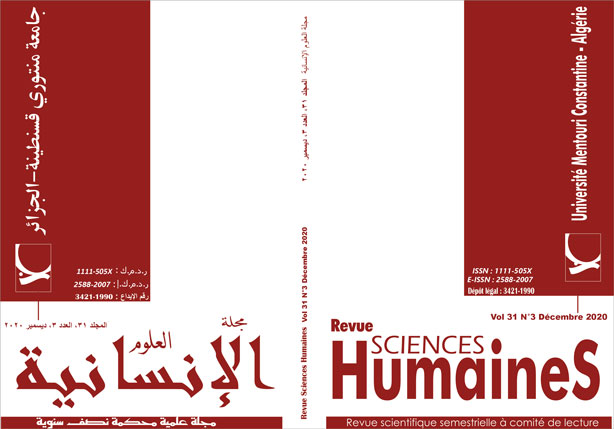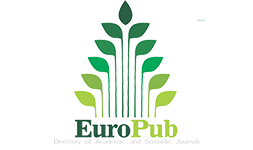تقييم كتاب اللغة الإنجليزية للسنة الثالثة من التعليم الثانوي الجزائر
الكلمات المفتاحية:
تقييم، تعلم مستقل، تعليم ثانوي، مقاربة بالكفاءاتالملخص
يهدف هذا المقال الى تقييم كتاب اللغة الانجليزية للسنة الثالثة من التعليم الثانوي لمعرفة الى اي مدى يعزز محتواه استقلالية المتعلم . تم تصميم هذا الكتاب وفقا لمبادئ المقاربة بالكفاءات الرامية الى انتاج متعلمين داخل الفصل الدراسي وفي حياتهم اليومية خارج المدرسة من خلال تعزيز حس المسؤولية و الاستقلالية في التعلم لديهم. يستند المقال الى فرضية انه اذا امتثل الكتاب لمبادئ التعلم المستقل كما تنص عليه المقاربة بالكفاءات فسيتمكن من انتاج متعلمين مستقلين. تعتمد المنهجية المتبعة في هذا المقال على قائمة مراجعة للتقييم تم وضعها خصيصا بالاعتماد على المبادئ التي تشكل التعلم المستقل التي تم ابرازها من خلال مراجعة الادبيات حول هذا الموضوع. تشير النتائج التي تم الحصول عليها من خلال هذا التقييم الى ان الكتاب المعني في هذا المقال يفتح مجالا لا باس به للتعلم المستقل للمتعلمين .
التنزيلات
المراجع
. Arab, S.A. , B. Riche, M. Bensemmane (2007), New Prospects, Secondary Education Year Three, The National Authority For School publications.
. Barfield, A., Ashwell, T., Carroll, M., Collins, K., Cowie, N., Critchley, M., Head, E.,Nix, M., Obermeier, A. & Robertson, M.C. (2001). Exploring and defining teacher autonomy: A collaborative discussion. In A. S. Mackenzie & E.
. Benson, P.(1997).The philosophy and politics of learner autonomy, In P. Benson and P. Voller (eds), Autonomy and Independence in Language Learning. London: Longman, 1997.
. Benson, P. (2000). Autonomy as a learners’ and teachers’ right. In B. Sinclair, I. McGrath and T. Lamb (eds), Learner Autonomy, Teacher Autonomy: Future Directions. Harlow: Longman.
. Chan, V (2003). Autonomous Language Learning: the teacher’s perspectives. Teaching in Higher Education, 8(1). 33-54.
. Chelli, S (2010) The Competency Based Approach in Algeria: a necessity in the Era of Globalisation.
Retrieved on October 23rd 2019 from: fll.univ-biskra_dz/images pdf…pdf_revue…/chelli%20saliha%20.pdf…
. Dam, L. (1994). How do we recognise an autonomous classroom? Die Neueren Sprachen, 93/5, 503-527.
. Fenner, A.B. & Newby, D. (Eds.). (2000). Approaches to Materials Design in European Textbooks: Implementing Principles of Authenticity, Learner Autonomy and Cultural Awareness. Graz/Strasbourg: European Centre for Modern Languages/Council of Europe Press
. Foroutan, M., N. Nooreen, S. H. Gani, and R. Baki. (2013). The Relationship Between Language Learning Autonomy Extent and Learning Styles in Malaysian Context. World Applied Sciences Journal 24, no. 3 (395-402.
. Graham, S. & Harris, K.R. (2000).The role of self-regulation and transcription skills in writing and writing development. Educational Psychology, 35(2), 3-12.
. Holec, H. (1981). Autonomy in Foreign Language Learning. Oxford. Pergamon.
. Ivanovska, B., (2015), Procedia - Social and Behavioral Sciences. 180 352 – 356. Available online at www.sciencedirect.com
. Lap, T. Q. (2005). Stimulating learner autonomy in English language education. A curriculum innovation study in a Vietnamese context. Doctoral thesis. University of Amsterdam.
. Little, David (1991) Learner Autonomy 1 –Definitions, Issues and Problems. Dublin. Authentic Language Learning Resources Ltd, Trinity College
. Littlejohn, A. (1985) Learner choice in language study. ELT Journal, 39(4). 253-261.
. McCafferty (Eds), Developing Autonomy, Proceedings of the College and University Educators’ 2001 Conference, Shizuoka, Japan, pp. 217-22. Tokyo: The Japan Association for Language Teaching. Available at:http:/www.encounters.jp/mike/professional/publications/tchauto.html
. Naiman N., Frohlich, M., Stern,H.H., & Todesco, A. (1978). The Good Language Learner, Toronto, Ontario Institute for Studies in Education.
. Nunan, D. (1988). Syllabus Design. Oxford: Oxford University Press
. Nunan, D. (1997). Designing and Adapting Materials to Encourage Learner Autonomy. In P. Benson, & P. Voller (Eds.). Autonomy and Independence in Language Learning (pp. 192-203). London: Longman.
. Nunan, D. (2000). Nine Steps to Learner Autonomy. Retrieved September 27, 2019, from http://www.andrasprak.su.se/polopoly_fs/1.84007.1333707257!/menu/standard/file/2003_11_Nunan_eng.pdf
. Oxford, R., L. (1991) Language Learning Strategies, What Every Teacher Should Know. New York: Newbury House.
. Richards, J. C., R. Schmidt. (2003) Longman Dictionary of Applied Linguistics and Language Teaching. Longman Publishing Group
. Riche , B., Arab, S.A., H. Ameziane, H. Hami, K. Louadj (20 ??) At The Crossroads, Secondary Education: Year One/ English. The National Authority For School publications.
. Thanasoulas, D. (2000). What is learner autonomy and how can it be fostered. The Internet TESL Journal 6, no. 11 37-48.
. Waite, S. (1994). Low-resourced self-access with EAP in the developing world: the
great enabler. ELT Journal 48/3, pp. 233–42.
. Weddel, K. S. (2006). Definitions components characteristics integrating competencies and content standards: Mapping competencies resources. Retrieved September, 20th 2019 from
http://www.cde.state.co.us/cdeadult/download/pdf/CompetencyBasedEducation.pdf
. Wenden, Anita, (1987) Learner Strategies in Language Learning. Prentice Hall International English Language Teaching
. Wenden, Anita, (1991) Learner Strategies for Learner Autonomy. Prentice Hall International English Language Teaching.
. Wenden, Anita L. (1998), Metacognitive knowledge and Language learning. Applied Linguistics, v19 n4 p515-37 Dec 1998.
. White, C. (2003). Language learning in distance education. Cambridge: Cambridge University Press
التنزيلات
منشور
كيفية الاقتباس
إصدار
القسم
الرخصة

هذا العمل مرخص بموجب Creative Commons Attribution-NonCommercial-ShareAlike 4.0 International License.
















